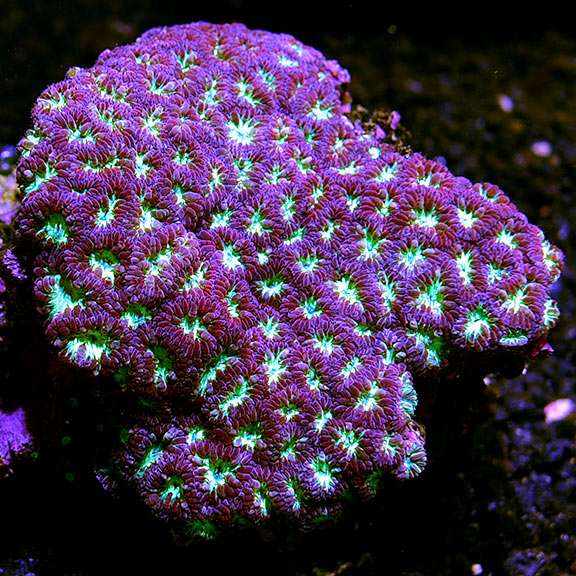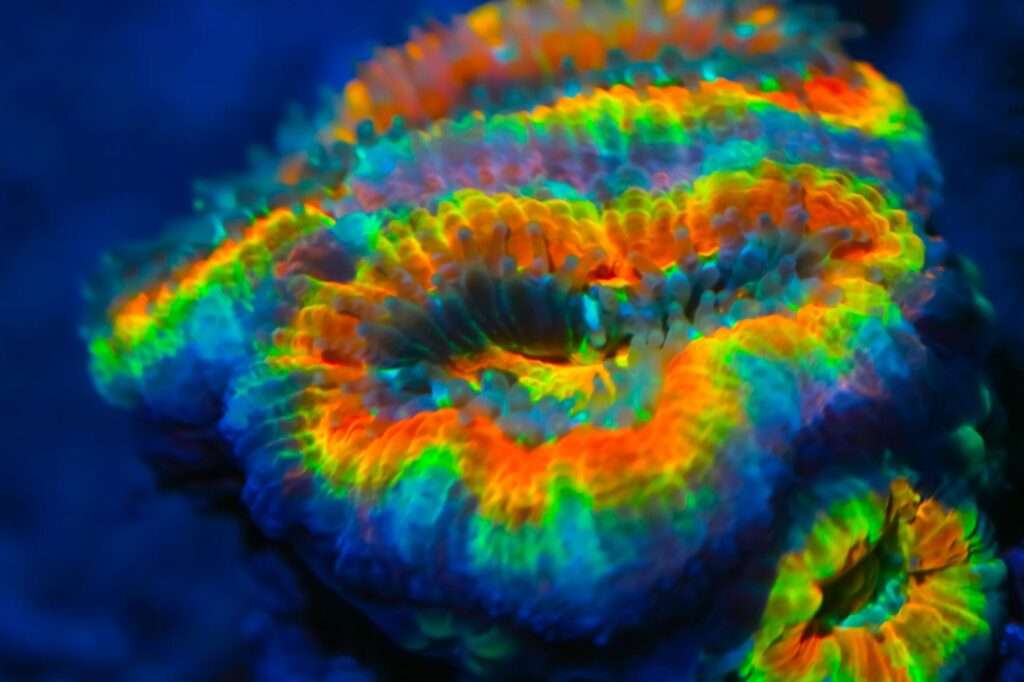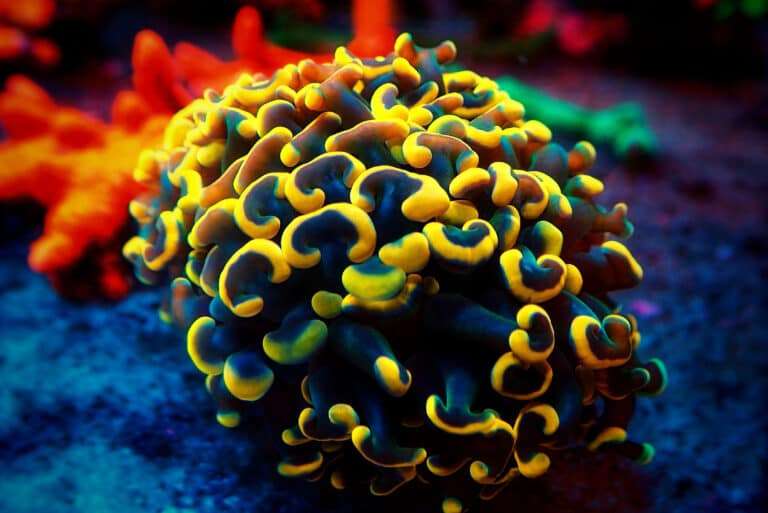
Amazing color combinations can be seen in blastomussa corals. One of the two popular Blastomussa corals is the stunning Blasto Coral (Blastomussa wellsi), while the other is its near relative, the Pineapple Coral (Blastomussa merleti).
Habitat
In 1961, Wells outlined the Blastomussa genus. There are three actual species of coral. Blastomussa merleti and Blastomussa wellsi are the only two species that are currently recognized as existing. The Blastomussa wellsi inhabit murky waters at depths of 0 to 131 feet on lower reef slopes (0 – 40 m). They spread their tentacles to feed at night.
Morphology
The Moon Coral, or B. wellsi, gets its name from the way its skeletal system develops from a common base and branches upward in a “dome” shape. It has 9–14 mm long asymmetrical corallite branches. Fully mature specimens’ polyps can measure up to 4 to 5 inches (10 to 13 cm) in diameter. When the polyps are fully developed, the structure and corallite branches are concealed. Unknown is the lifespan. The Blasto Coral can be found in two color variations in nature: dark red and green. Diverse colors, including green, purple, yellow, pink, red, and occasionally even blue, can be seen in aquaculture. Additionally, they have mixtures of these hues.
In Captivity

- Feeding
The Blastomussa genus has evolved a number of feeding techniques. They get some of their nutrients from a marine alga called zooxanthellae through a symbiotic interaction. They can also take in dissolved organic substances and planktonic creatures as well as food particles from the water column. They can grow more quickly if you feed them multiple times every week.
- Social Interactions and Compatibility
Other corals are aggressively attacked by the Blastomussa genus. The B. wellsi will tolerate other corals of the same species, but they must be maintained well apart. The skeleton structure of Blastomussa corals makes them suitable for concealing from predators and coexisting in the wild with a variety of creatures. It is discovered among a variety of mollusks, sponges, and sessile invertebrates.
Table





